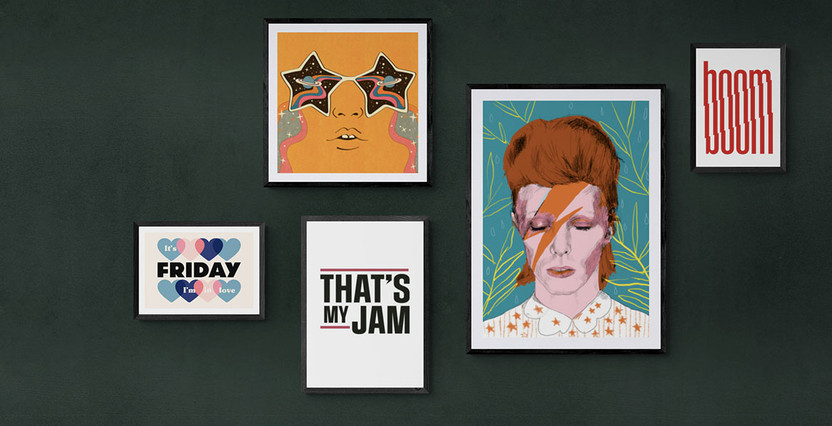The relationship between music and art
Posted by East End Prints on 4th Aug 2021
As two forms of creative expression there is an obvious similarity between music and art. However, many people have questioned whether any kind of relationship between the two actually exists. Over the years this has been tested in many different ways, including combining specific music and a certain environment to produce a very particular kind of painting. There is plenty of evidence that one can affect the other so where do the intersections that create the relationship between music and art actually happen?
Using art to interpret music
Artists listening to music while creating can be heavily influenced by what they hear. Everything from tempo to style can affect details such as mark-making and colour choices, no matter who the artist is. Slower music tends to leave more room for exploring emotions and emotional expression via art, with the emotions experienced in response to the music often showing up the most. It’s easy to understand the relationship between music and art by simply picking up a pencil, paintbrush or camera, putting on some music and interpreting how it makes you feel.
Delving deeper
Whether or not you’ve tried and tested this theory yourself, the relationship between art and music is frequently fascinating and sometimes quite simple to predict. There are many themes that tend to show up again and again when artists listen to a specific type of music.
● Light and peaceful music. There is an argument that painting to this type of music produces a more realistic result because it’s easier to focus on the details when we are relaxed. Bright tones and colours often result from listening to light and peaceful music in an environment with lots of natural daylight. Landscapes are frequently the result of this type of approach. As the music impacts the subconscious the end result will be lighter colour choices and a more relaxed brush stroke.
● High tempo music. An artist listening to music that is fast and/or has lots of breaks in it is likely to produce something in a much more abstract style. Looking at this type of art you can often get the sense that the person who produced it was going through a range of swirling emotions or experiencing the kind of strong feelings and skipping thoughts that can be driven by fast, heavy music. Colour use tends to be a broad spectrum where high tempo music is concerned, as if the artist couldn’t quite make up their mind - or kept changing it.
● Low mood music. Dark, depressing and moody paintings are plentiful in the art world and are often inspired by listening to music that has the same feel. There is something very powerful about depicting strong human emotions and the darkness that exists in many of our lives and low mood music is one of the simplest ways for the artist to access this place. The next time you come across a very deep or distressing piece of art, think about the music that the artist might have heard in order to bring it to life.
The relationship between music and art is a historic one that has inspired many a beautiful piece and you can see some beautiful music art prints online but we’d also love to see you in our Brick Lane shop to tell us what these prints and the relationship between the two means to you.

